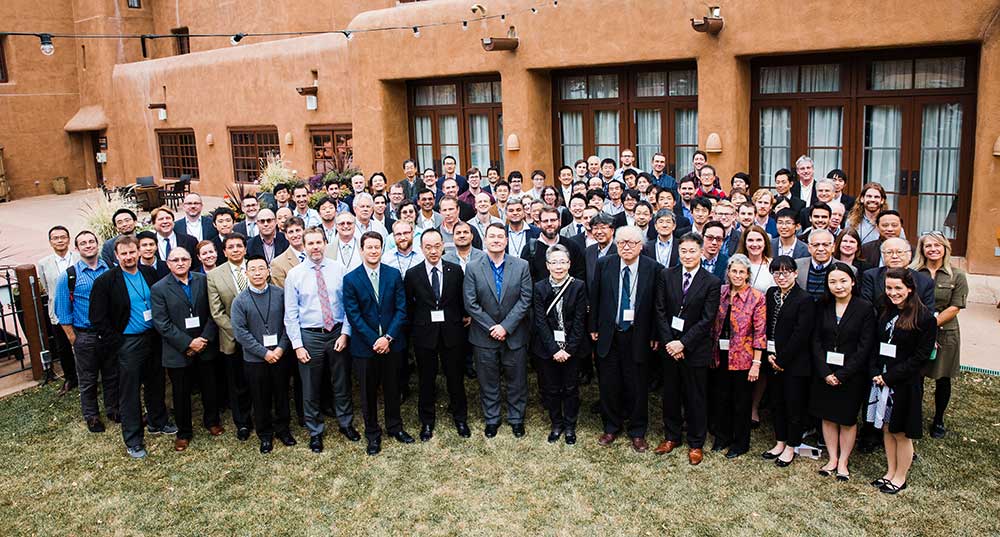UConn MSE Featured Prominently at US-Japan Seminar
By Amanda Olavarria
The US-Japan Seminar on Dielectric and Piezoelectric Ceramics has occurred once every two years for almost 4 decades, bringing together ~100 scientists and technologists from industry, academia and government laboratories. It is one of the premier venues for the exchange of scientific ideas on ceramic materials for electronics and serves to foster relationships between experts from Japan and the U.S. The 18th annual seminar was held last November in Santa Fe, New Mexico and was co-organized by MSE Department Head, Dr. Bryan Huey. A number of MSE faculty, graduate students and alumni participated in the invitation-only seminar and presented their work.
Notably, MSE faculty member Dr. George Rossetti’s leadership in the field was recognized with a plenary lecture in memoriam of Professor L. Eric Cross, one of the founders of the biennial meetings. Dr. Cross was an esteemed researcher in the field, a member of the U.S. National Academy of Engineering, and a founding member of the Materials Research Laboratory at the Pennsylvania State University. He was also Professor Rossetti’s doctoral research advisor.
In his plenary lecture entitled ‘Phase Transitions in Ferroelectric Perovskites: Energetics and Phenomenology’ Professor Rossetti recounted Dr. Cross’s seminal contributions to the phenomenological theory of three distinct types of ferroelectric materials that form the basis for most ceramic capacitors and electromechanical transducers. Professor Rossetti’s lecture then focused on work from his own group, covering recent advances in the understanding of these materials obtained through the combined use of experimental and computational thermodynamic approaches.
In fact, this was the second plenary lecture Rossetti presented at a US-Japan Seminar, a rare honor. He delivered his first plenary lecture entitled ‘Concepts of Morphotropism in Ferroelectric Solid Solutions’ in 2007 at the 13th US-Japan Seminar in Awaji, Japan. There, he presented a phenomenological theory for the phase diagrams of binary ferroelectric systems that captures their key topological features and explains relationships between phase transformations, microstructure and piezoelectric properties.
Rossetti’s connection to researchers in Japan dates back nearly three decades. While a doctoral student he spent a year (1989-1990) in Japan as a visiting scientist at the Carbon and Inorganic Materials Group, Mitsubishi Kasei, Ltd., Yokohama. Rossetti has continued to collaborate with a number of Japanese researchers over the years.
Published: February 7, 2018
Categories: conferences, faculty, lecture, news, research
Available Archives

